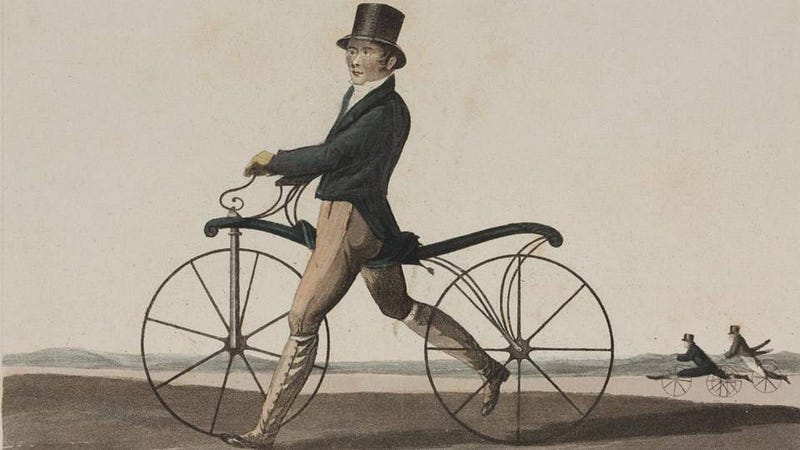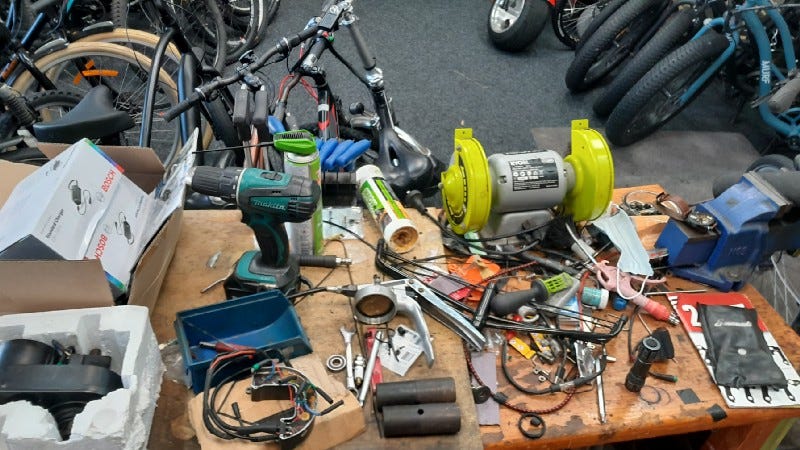# Rediscovering Balance: Merging Low-Tech and High-Tech Work
Written on
Chapter 1: The Struggle for Connection
After dedicating almost five years to the fintech startup scene, I came to realize I was missing essential elements in my life. Despite the convenience of remote work, I found myself lacking meaningful human interaction. My daily routine revolved around software, leaving me feeling disconnected from tangible tasks. Working on solutions for real estate professionals in New Zealand—a region grappling with a significant property bubble—posed a moral dilemma for me and negatively impacted my community.

Chapter 2: Virtual Realities
Engaging with colleague avatars at virtual watercoolers in Gather.Town has been one of the most bizarre experiences in my professional journey. My five years immersed in cutting-edge technologies like AI, machine learning, and blockchain ironically led to a decline in my practical skills, affecting various aspects of my life and leaving me feeling diminished. This prompted me to reflect on two critical insights:
- As technology progresses at an unprecedented pace, our evolutionary mindset has not adapted accordingly. Are we losing touch with fundamental life skills in pursuit of high-paying tech positions?
- How well do tech professionals fare in the real world, often dubbed the "jungle" beyond their screens?
Chapter 3: A Journey Back to Basics
When my contract for the mortgage software project abruptly concluded, I felt an urge to return to hands-on, traditional work—a kind of career sabbatical. My motivations were twofold: to perform meaningful work that would benefit my community and to address gaps I had identified in my professional capabilities, such as prioritizing tasks effectively.
However, I faced a challenge—my CV was poorly suited for this type of work. In my younger years, I was passionate about mountain biking. When I noticed an opening for a bike and e-bike mechanic at a local shop, I set aside my pride and accepted a 50% salary reduction. I effectively became an apprentice to a seasoned mechanic with four decades of experience across various engines.
The experience was humbling. I grappled with tools, made mistakes, and had to quickly familiarize myself with the latest advancements in e-bike technology. Although challenging, this role met all my criteria: it involved hands-on work, rekindled a long-lost passion, contributed positively to my community, and allowed for real engagement with people.
Bikes and e-bikes, while recently integrating high-tech features, are rooted in a history of gradual evolution that imparts valuable lessons on developing modern technology.

Chapter 4: Lessons from Mechanics
The slow, steady evolution of bicycles has enabled mechanics to adapt alongside technological advancements, maintaining a reliable service model. This stands in stark contrast to the rapid changes seen in blockchain and cryptocurrency technologies, which often leave even their creators uncertain about their viability.

Only a small fraction of the public truly understands how these technologies function, leading to frequent failures and complications—evidenced by the collapse of Terra/Luna, where even the creators struggled to stabilize their blockchain.
Chapter 5: Understanding Through Tinkering
The juxtaposition of mechanical work versus digital tasks has illuminated the importance of understanding cause-and-effect relationships. While working on a laptop allows for multitasking, it can obscure the sequential nature of mechanical tasks, where the results of each action are visible and immediate.

Old-school mechanics impart timeless wisdom that modern work often overlooks. As one veteran mechanic aptly put it, “You can’t fix it if you don’t know how it works.” This reality has become increasingly lost in the realm of digital labor, where the underlying mechanics of our tools often elude us.
Chapter 6: The Power of Cross-Training
Since resuming work in fintech while maintaining my part-time mechanic role, I've discovered that alternating between low-tech and high-tech environments has been akin to doing mental supersets—boosting my overall performance.
The benefits of this cross-training approach are manifold:
- Enhanced ability to break down and prioritize tasks.
- Improved problem-solving skills.
- Greater awareness of task dependencies, reducing backlogs.
- Recognition of the pitfalls of over-optimization.
- A return to simplicity in systems before adding complexity.
- Increased focus on single tasks without distractions.
These shifts have also positively impacted my personal life, offering therapeutic benefits and fostering a stronger connection with my children.

My relationship with my three-year-old son has transformed; he now sees me engaged in tangible work rather than just clicking away at a laptop. His enthusiasm for joining me in the workshop has dramatically improved his dexterity and curiosity—reflecting the age-old human learning process of tactile and observational learning.
Conclusion: Embracing the Craft of the 21st Century
If you find yourself feeling discontent in the digital realm of remote work, remember that you are not alone. Humanity has long thrived in physical endeavors, and my experiences have reaffirmed the value of hands-on tinkering. Engaging with low-tech tasks can enhance various aspects of our digital work and enrich our lives.
As we look towards the future, especially in the realm of electric mobility, there’s much to learn and gain from being a modern mechanic. So, don’t hesitate to roll up your sleeves and dive into hands-on work!
About Andrew Gillick
Andrew specializes in creating top-notch technical and API documentation for fintech startups, helping developers streamline their work while attracting investors and engaging customers. For collaboration opportunities, please visit www.andrewgillick.com or subscribe to his newsletter, which offers insights into the evolving cashless economy.